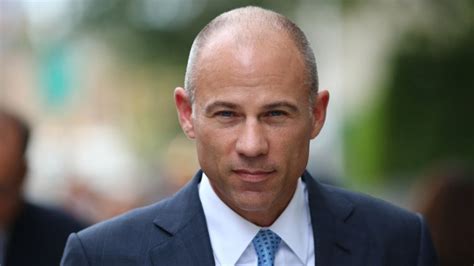
Pixar employees, despite enduring demanding conditions under Steve Jobs’ leadership that included 3 AM phone calls and vacation interruptions, cherished their experiences and respected his vision, according to former Pixar executive, Ann Brilz.
Ann Brilz, who worked at Pixar during the Steve Jobs era, recently shared insights into the intense work environment fostered by the late Apple co-founder. While acknowledging the demanding nature of Jobs’ management style, which often involved late-night calls and intrusions on personal time, Brilz emphasized the deep respect and affection Pixar employees held for him. These revelations offer a nuanced perspective on Jobs’ leadership, balancing the well-documented stories of his demanding personality with accounts of the inspiration and dedication he instilled in his team. The insights come from an interview where Brilz painted a picture of a workplace driven by excellence, innovation, and a shared passion for creating groundbreaking animated films. The challenging environment, though sometimes intrusive, was ultimately seen as a necessary component of achieving the high standards Jobs set for Pixar.
Brilz highlighted the fact that Jobs’ relentless pursuit of perfection and his unwavering commitment to quality were key factors in Pixar’s success. She explained that while the frequent calls at odd hours and disruptions during vacations might seem unreasonable, they stemmed from Jobs’ deep involvement in every aspect of the company and his dedication to ensuring that every detail met his exacting standards. “He was tough, no question,” Brilz admitted. “But it was tough love. He pushed us to be better than we thought we could be.”
The former executive further elaborated that Jobs’ demanding nature was coupled with a unique ability to inspire his team. He fostered a culture of creativity and innovation, encouraging employees to take risks and challenge conventional thinking. This environment, although stressful at times, allowed individuals to thrive and contribute to the creation of iconic films like “Toy Story,” “Monsters, Inc.,” and “Finding Nemo.” Brilz emphasized that the shared sense of purpose and the knowledge that they were working on something truly special made the demanding conditions bearable.
Brilz also pointed out that Jobs’ approach was not universally loved, and there were undoubtedly employees who found it difficult to cope with his intensity. However, she maintained that the majority of the Pixar team understood and appreciated his vision. They recognized that his relentless drive was essential to achieving the groundbreaking results that defined Pixar’s early years. The company’s remarkable string of successes, both critically and commercially, served as validation of Jobs’ leadership style, even with its demanding aspects.
Furthermore, Brilz recounted specific instances where Jobs’ attention to detail and his willingness to challenge the status quo resulted in significant improvements to Pixar’s films. She described how he would often provide insightful feedback on early versions of films, pushing directors and animators to refine their work and elevate the overall quality. These interventions, while sometimes perceived as intrusive, ultimately contributed to the films’ enduring appeal and critical acclaim.
The insights from Brilz add a valuable layer of complexity to the narrative surrounding Steve Jobs’ leadership. While acknowledging his demanding personality and the challenges it posed for employees, she also underscores his ability to inspire, motivate, and drive his team to achieve extraordinary results. Her account provides a more balanced perspective, highlighting both the positive and negative aspects of his leadership style and offering a deeper understanding of the culture that fostered Pixar’s groundbreaking success.
The environment Brilz describes is a stark contrast to many modern workplaces, where work-life balance and employee well-being are often prioritized. However, it also serves as a reminder that exceptional achievements often require exceptional effort and a willingness to push boundaries. The story of Pixar under Steve Jobs is a testament to the power of a clear vision, unwavering dedication, and a culture of relentless pursuit of excellence, even if it comes at the expense of personal comfort and convenience.
Brilz’s revelations also spark a broader discussion about the nature of leadership and the trade-offs between demanding high performance and fostering a positive work environment. While there is no one-size-fits-all approach, the Pixar story suggests that a strong sense of purpose, a culture of innovation, and a leader who is deeply invested in the work can compensate for demanding conditions, at least for some individuals. The success of Pixar under Steve Jobs remains a compelling case study in the complex dynamics of leadership, innovation, and the pursuit of excellence.
The demanding schedule and high-pressure environment at Pixar under Jobs weren’t without their detractors. Some former employees have spoken of burnout and a sense of constant pressure to meet unrealistic expectations. However, the prevailing sentiment, as expressed by Brilz, seems to be one of gratitude for the opportunity to have worked alongside such a visionary leader and to have contributed to the creation of groundbreaking films.
Brilz’s reflections on Pixar under Steve Jobs offer a valuable lesson for aspiring leaders and entrepreneurs. It highlights the importance of having a clear vision, setting high standards, and fostering a culture of innovation. It also underscores the need to be deeply involved in the work and to be willing to challenge the status quo. While Jobs’ methods may not be universally applicable or desirable, his success at Pixar provides a compelling example of the power of demanding leadership in the pursuit of excellence. The story of Pixar remains a powerful reminder of what can be achieved when passion, talent, and relentless dedication are combined under the guidance of a visionary leader, even one known for his demanding style.
Furthermore, the article highlights the importance of understanding the context in which leadership styles are employed. Jobs’ approach worked at Pixar because it was aligned with the company’s mission to create groundbreaking animated films. The employees were passionate about their work and willing to put in the extra effort to achieve that goal. In a different context, Jobs’ demanding style might have been less effective or even counterproductive.
Brilz’s interview contributes to the ongoing debate about the role of strong leadership in driving innovation and achieving success. It challenges the notion that a positive work environment is the only factor that matters and suggests that demanding conditions can, in some cases, be a catalyst for creativity and excellence. The Pixar story serves as a reminder that there are many different paths to success and that the most effective leadership style depends on the specific context and the goals of the organization.
In conclusion, Ann Brilz’s insights into Pixar under Steve Jobs provide a nuanced perspective on his leadership style. While acknowledging the demanding conditions, she emphasizes the deep respect and affection that employees held for him and the transformative impact he had on the company. Her account offers a valuable lesson for aspiring leaders, highlighting the importance of vision, dedication, and a relentless pursuit of excellence. The story of Pixar under Steve Jobs remains a compelling case study in the complex dynamics of leadership, innovation, and the pursuit of groundbreaking achievements.
The impact of Jobs’ leadership extended beyond the individual films produced at Pixar. He fostered a culture of innovation that permeated the entire company, leading to advancements in animation technology and storytelling techniques. Pixar’s innovations have had a profound impact on the film industry as a whole, influencing the way animated films are made and experienced. The company’s success also paved the way for other animation studios to thrive, creating a more diverse and vibrant landscape for animated storytelling.
Brilz’s description of Pixar under Jobs paints a picture of a highly collaborative environment, despite the demanding conditions. She explained that employees were encouraged to share their ideas and challenge each other, fostering a culture of intellectual curiosity and constant improvement. This collaborative spirit was essential to Pixar’s success, allowing the company to overcome technical challenges and create innovative storytelling techniques. The willingness to embrace new ideas and challenge conventional thinking was a key factor in Pixar’s ability to consistently produce groundbreaking films.
The demanding nature of Jobs’ leadership also fostered a sense of camaraderie among Pixar employees. They were all working towards a common goal and willing to support each other in the face of challenges. This shared sense of purpose created a strong bond among the team members, contributing to a positive and supportive work environment, despite the high-pressure conditions. The knowledge that they were all in it together helped employees to cope with the demands of the job and to remain committed to the company’s mission.
Furthermore, Jobs’ demanding style also helped to attract and retain top talent. The best animators, storytellers, and technicians were drawn to Pixar by the opportunity to work on groundbreaking projects and to learn from the best in the industry. The high standards set by Jobs ensured that Pixar was always at the forefront of animation technology and storytelling innovation. The company’s reputation for excellence made it a magnet for talented individuals who were eager to push the boundaries of what was possible in animation.
The legacy of Steve Jobs at Pixar extends far beyond the films he helped to create. He established a culture of innovation, collaboration, and relentless pursuit of excellence that continues to shape the company today. Pixar’s continued success is a testament to the enduring impact of his leadership and the values he instilled in the company. The story of Pixar under Steve Jobs remains a powerful example of what can be achieved when passion, talent, and demanding leadership are combined in the pursuit of groundbreaking achievements.
The insights shared by Ann Brilz also raise important questions about the future of work and the role of leadership in the 21st century. As companies grapple with the challenges of remote work, globalization, and increasing competition, they are looking for new ways to motivate and inspire their employees. The Pixar story offers valuable lessons about the importance of vision, dedication, and a culture of innovation. However, it also highlights the need to balance demanding leadership with a focus on employee well-being and work-life balance. The challenge for leaders today is to find a way to inspire their teams to achieve great things without sacrificing their personal lives or creating a toxic work environment.
The success of Pixar under Steve Jobs is a complex and multifaceted story. It is a story of innovation, collaboration, and relentless pursuit of excellence. It is also a story of demanding leadership, high-pressure conditions, and the sacrifices that are sometimes required to achieve great things. The insights shared by Ann Brilz provide a valuable perspective on this story, highlighting both the positive and negative aspects of Jobs’ leadership style and offering a deeper understanding of the culture that fostered Pixar’s groundbreaking success. The story of Pixar remains a powerful reminder of what can be achieved when passion, talent, and demanding leadership are combined in the pursuit of groundbreaking achievements.
The experiences at Pixar under Jobs also speak to the types of personalities that thrive in such environments. Individuals who are highly motivated, resilient, and passionate about their work are more likely to succeed in a demanding environment than those who prioritize work-life balance or prefer a more relaxed pace. The ability to handle pressure, adapt to change, and maintain a positive attitude in the face of challenges are also crucial for success in such a setting. While not everyone is suited for such an environment, those who are can find it to be incredibly rewarding.
Furthermore, the Pixar story demonstrates the importance of aligning individual goals with the company’s mission. Employees who are deeply invested in the company’s success and who believe in its values are more likely to be willing to go the extra mile and to put in the long hours required to achieve its goals. A strong sense of purpose and a shared commitment to excellence can help to mitigate the negative effects of a demanding work environment and to foster a sense of camaraderie among team members.
In conclusion, the legacy of Steve Jobs at Pixar is a complex and enduring one. His demanding leadership style, while not without its detractors, played a crucial role in shaping the company’s culture of innovation and its unparalleled success in the world of animation. The insights shared by Ann Brilz offer a valuable perspective on this story, highlighting the importance of vision, dedication, and a relentless pursuit of excellence. The story of Pixar under Steve Jobs remains a powerful reminder of what can be achieved when passion, talent, and demanding leadership are combined in the pursuit of groundbreaking achievements, even if it means enduring 3 AM phone calls and vacation interruptions.
Frequently Asked Questions (FAQ)
1. What were the main characteristics of Steve Jobs’ leadership style at Pixar, according to Ann Brilz?
According to Ann Brilz, Steve Jobs’ leadership style was characterized by demanding conditions that included 3 AM phone calls and vacation interruptions. Despite these challenges, Brilz noted that Pixar employees generally respected and loved working with him. His style was driven by a relentless pursuit of perfection and a deep involvement in every aspect of the company, pushing employees to exceed their perceived limits and fostering a culture of innovation and creativity.
2. How did Pixar employees generally react to Steve Jobs’ demanding leadership, as described by Brilz?
While acknowledging the demanding nature of Jobs’ management style, Brilz emphasizes that most Pixar employees held deep respect and affection for him. They understood that his relentless drive was essential to achieving the groundbreaking results that defined Pixar’s early years. Despite the challenges of late-night calls and vacation interruptions, employees were inspired by his vision and commitment to quality.
3. What factors contributed to the success of Pixar under Steve Jobs’ leadership, despite his demanding style?
Several factors contributed to Pixar’s success. These included: Jobs’ clear vision and unwavering commitment to quality; a culture of creativity and innovation that encouraged employees to take risks; a shared sense of purpose among employees who were passionate about their work; and a highly collaborative environment where employees were encouraged to share their ideas and challenge each other. His ability to attract and retain top talent, driven by the opportunity to work on groundbreaking projects, also played a significant role.
4. How does Brilz’s account of Pixar under Steve Jobs contribute to the broader discussion about leadership styles and work environments?
Brilz’s account adds complexity to the narrative surrounding Steve Jobs’ leadership, balancing the well-documented stories of his demanding personality with accounts of the inspiration and dedication he instilled in his team. It challenges the notion that a positive work environment is the only factor that matters and suggests that demanding conditions can, in some cases, be a catalyst for creativity and excellence. It also highlights the importance of understanding the context in which leadership styles are employed and aligning individual goals with the company’s mission.
5. What lasting impact did Steve Jobs have on Pixar’s culture and the animation industry as a whole?
Steve Jobs established a culture of innovation, collaboration, and relentless pursuit of excellence that continues to shape Pixar today. His leadership led to advancements in animation technology and storytelling techniques that have had a profound impact on the film industry as a whole. Pixar’s success also paved the way for other animation studios to thrive, creating a more diverse and vibrant landscape for animated storytelling. His legacy extends far beyond the individual films he helped to create, influencing the way animated films are made and experienced worldwide.









